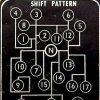What's the cheapest and simplest way to get sulforaphane? Any supplement? Or through sprouts?

#1
Posted 05 July 2017 - 06:52 AM
#2
Posted 05 July 2017 - 11:58 AM
I'm personally supplementing BroccoMax, the 120 capsule version doesn't seem so expensive and I think that its composition is the optimal for supplementing Sulforaphane:
BroccoMax® has been demonstrated in vitro to yield approximately 8 mg of sulforaphane per DR capsule containing 30 mg of SGS.
BroccoMax® broccoli seed extract is manufactured using a patented process that preserves myrosinase, the enzyme in broccoli that metabolizes SGS (Sulforaphane Glucosinolate, a.k.a. glucoraphanin) in the small intestine into sulforaphane.
I'm not affiliated with this brand in any way. If I'm wrong, please, correct me. I'm the first one interested in not throwing away my money.
#3
Posted 05 July 2017 - 07:00 PM
The only thing I don't understand about BroccoMax is that two other sulforaphane supplements have doses of 1 mg and 0.4 mg per pill, whereas BroccoMax has 30 mg of sulforaphane glucosinolate. Usually differences in herbal extracts aren't this great. Does the glucosinolate form only have a small amount of actual sulforaphane in it or what?
#4
Posted 06 July 2017 - 10:55 PM
Edited by tintinet, 06 July 2017 - 10:59 PM.
#5
Posted 08 July 2017 - 02:55 AM
Good info on sulforaphane supps including ones used by Johns Hopkins, so they have been tested and actual contents are known. There is info on sprouts as well.
http://eatmovehack.c...nin-myrosinase/
#6
Posted 13 August 2017 - 04:34 AM
Why use seed extracts when 100% whole broccoli sprout supplements with active myrosinase are available? Before proceeding, I must disclose a potential conflict of interest. Not only is my doctoral thesis on sulforaphane but I am also the CSO of an Australian science-based company that manufactures the highest sulforaphane-yielding broccoli sprout raw material .(and capsules) available. Cell-Logic is a science-based Australian company and we have been working on and perfecting our EnduraCell raw material for over a decade. We add nothing in the process and remove nothing but water in the drying. The sprouts' endogenous myrosinase is retained. The bottom line is that this is a whole food broccoli sprout - it is not manipulated in a lab in any way - no extraction from seeds and then manipulating the extract to yield sulforaphane. Our whole sprout material contains a number of other bioactives and nutrients which are essential for optimal activity.
#7
Posted 14 August 2017 - 05:03 AM
The only thing I don't understand about BroccoMax is that two other sulforaphane supplements have doses of 1 mg and 0.4 mg per pill, whereas BroccoMax has 30 mg of sulforaphane glucosinolate. Usually differences in herbal extracts aren't this great. Does the glucosinolate form only have a small amount of actual sulforaphane in it or what?
That is because 30 mg of sulforaphane glucosinolate refers to glucoraphanin, the precursor compound. It's confusing I know but this does not refer to sulforaphane at all; it is simply the precursor without the myrosinase enzyme. This cannot be compared with products that actually produce sulforaphane when you swallow them. Pills with1 mg and 0.4 mg per pill are incredibly low. Most of the clinical trials for sulforaphane shows that doses around 18-20 mg are about the daily quantity that is producing a clinical response. Best to look for a capsule that contains around 10 mg or more to match these responses.
#8
Posted 14 August 2017 - 10:24 AM
This is one of those subjects that tends toward the discussion of commercial products, which is not banned at LongeCity, but we do have a specific sub forum for such discussions: http://www.longecity...uct-discussion/
Just wondering if the discussion-starter or other contributors think it should be moved? If more sulforaphane products/companies are mentioned, then I think it should be moved.
#9
Posted 14 August 2017 - 01:34 PM
#10
Posted 14 August 2017 - 05:19 PM
I would not blame ChristineH, after all she revealed her conflict of interest straightaway and her product may be worthwhile, or interesting. The main sulphorafane thread btw also mentions at least one supplement brand:
http://www.longecity...-the-sirtulins/
Yet I concur that the present thread is better placed in the vendor vetting department.
OP's question is amply discussed in the thread I linked, and the preliminary answer is: take sulphorafane supps(if you can get a really good one) to fight a medical condition and eat a variety of cruciferous vegetables if you want to slow aging.
#11
Posted 14 August 2017 - 05:39 PM
REPLY TO MIND: The way the board is organized the vendor vetting area is where IMHO no one will ever notice or likely read those threads (I'm sure placement of that forum was not an accident). You could have placed it under the supplement area for example.
In fact (for what my opinion is worth) the organization of this whole area of the forum is not optimal. I realize that figuring out how to organize the section can't be easy, but as it is where to look for things is not obvious or consistent. I can't help thinking there must be a better way.
#12
Posted 16 August 2017 - 06:27 AM
REPLY TO MIND: The way the board is organized the vendor vetting area is where IMHO no one will ever notice or likely read those threads (I'm sure placement of that forum was not an accident). You could have placed it under the supplement area for example.
In fact (for what my opinion is worth) the organization of this whole area of the forum is not optimal. I realize that figuring out how to organize the section can't be easy, but as it is where to look for things is not obvious or consistent. I can't help thinking there must be a better way.
I can see I've raised the ire of certain members. I disclosed my commercial interest - and then addressed some valid questions raised by some members. Because I disclosed my interest, it seems I am not permitted to answer questions with perfectly correct answers. Why am I being sent off to the advt area? My research area is in sulforaphane - I've lived and breathed its science for over 10 years. I am sure I can answer most if not all of the related questions in a completely unbiased manner. Here is an educational resource members could use and yet I'm made to feel unwelcome. Where is the logic in that? No need for me to mention product - even though someone has referred to a product in the post in this thread. Because it is my product, my comments seem to be regarded as invalid. I mentioned my company background for 2 reasons - to be completely transparent - and to indicate that I may have an opinion worth considering. Now, how is that unreasonable?
#13
Posted 22 August 2017 - 03:53 PM
Why not just add broccoli seeds to a smoothie? I do. Far cheaper than a supplement. None of the trouble of sprouting or vetting sources (well, a little vetting for the seeds). They're bitter but palatable in a shake.
I found they added a nice crunch and the bitterness was pleasant in certain types of salads, in the same way the bitterness of chicory can be pleasant with sweet tomatoes and oil and vinegar.
Just wanted to add that the seeds have a higher sulforaphane content than sprouts.
Edited by Junk Master, 22 August 2017 - 03:54 PM.
#14
Posted 05 November 2017 - 10:54 PM
The only thing I don't understand about BroccoMax is that two other sulforaphane supplements have doses of 1 mg and 0.4 mg per pill, whereas BroccoMax has 30 mg of sulforaphane glucosinolate. Usually differences in herbal extracts aren't this great. Does the glucosinolate form only have a small amount of actual sulforaphane in it or what?
Hi Joel,
'sullforaphane glucosinolate' (SGS) is a marketing term for 'glucoraphanin' the precursor compound. What this means is that 30 mg SGS yields 8 mg sulforaphane, the bioactive compound for which the evidence exists. If you keep in mind that most of the clinical trials for which there is a beneficial outcome used around 18-20 mg sulforaphane daily, it is clear that the low yield supplements you mention at 0.4 and 1 mg are not a practical means of obtaining sulforaphane.
Why not just add broccoli seeds to a smoothie? I do. Far cheaper than a supplement. None of the trouble of sprouting or vetting sources (well, a little vetting for the seeds). They're bitter but palatable in a shake.
I found they added a nice crunch and the bitterness was pleasant in certain types of salads, in the same way the bitterness of chicory can be pleasant with sweet tomatoes and oil and vinegar.
Just wanted to add that the seeds have a higher sulforaphane content than sprouts.
You may not be aware that the seeds contain a toxin, erucic acid, so that's why these are not recommended.
#15
Posted 07 November 2017 - 03:46 PM
Interestingly, erucic acid is a component of Lorenzo's Oil. I came across this--
Oils with a high erucic acid content produce cardiac lipidosis in rodents but not in primates, and negative cardiac effects are not found in humans after LO treatment.
#16
Posted 13 November 2017 - 10:30 PM
Sulforaphane inhibits mitochondrial fission. ref
Mitochondria normally have many fission fusion cycles per day for quality control ref During fission, defects are segregated into only one of the two daughter. Daughters that have a lot of defects are no longer able to fuse, and are eventually eliminated by the parent cell (mitophagy). Mitochondria that are fused into large networks work more efficiently, so inhibiting fission has short term benefits, at the price of halting the quality control process. Thus, supplementing with sulforaphane may need some intermissions to allow mitochondrial quality control.
#17
Posted 14 November 2017 - 07:38 AM
Thanks for pointing out this interesting study, RWigham. For those of us who were not so much inclined to supplementing sulforaphane anyway, the study reads as anspirited incitement to keep on eating our cruciferous vegetables.
#18
Posted 14 November 2017 - 05:27 PM
Buy broccoli seeds sold for sprouting, grind them into powder in a coffee mill, and fill capsules. its about half as bioavailable as the most sophisticated extracts to date. If you're concerned with pathogens (or are immunocompromised), soak in 25% bleach a few minutes, rinse and air dry before grinding.
I just filled about 800 'OO' sized capsules with about 1 lb ($30) of seed. Given the average broccoli seed contains about 70 µmol/g glucoraphanin, each '00' capsule thus filled would contain about 40 µmol = 17.5 mg glucoraphanin, and according to the following paper, would be similar in sulforaphane bioavailability to 20 µmol = 3.5 mg sulforaphane in a broccoli seed extract.
A 2015 paper by the Johns Hopkins researchers that had provided much of the broccoli sprout extract for sulforaphane research:
Fahey et al, 2015. Sulforaphane bioavailability from glucoraphanin-rich broccoli: control by active endogenous myrosinase. PloS one, 10(11), p.e0140963.
We and others have used broccoli sprout extracts (both freshly made, and lyophilized) as a delivery agent for sulforaphane in clinical studies conducted in China, the USA, and the United Kingdom. The use of such extracts, though effective, is complicated by the fact that sulforaphane is only moderately stable over time, especially in aqueous solution. The reactivity of sulforaphane is exacerbated by the fact that lyophilized extracts are hygroscopic, and as water is adsorbed during protracted storage or formulation, their useful shelf-life is limited unless chemically stabilized, kept cold, or made frequently during the study. It is difficult and expensive to stabilize and formulate sulforaphane for extended clinical trials and particularly for long-term interventions.
Sulforaphane-rich broccoli sprout extract must be kept frozen to maintain potency, but is highly bioavailable when ingested, and there is low inter- and intra-individual variability in percent of dose excreted as SF dithiocarbamate metabolites.The mean expected recovery of dithiocarbamates (sulforaphane and all of its metabolites) from 24 hour urine collections, following a single 8 AM dose of sulforaphane-rich broccoli extract was about 69% of dose on a molar basis.Broccoli seed powder (BSdP) was made by surface disinfesting seeds of broccoli (Brassica oleracea var. italica) with 25% Clorox bleach, followed by extensive rinsing with distilled water and drying. Dried seeds were ground to a powder in a manner that prevented excessive heat formation which could have denatured the enzyme myrosinase. This seed preparation was thus rich in glucoraphanin and active myrosinase (which is present in both seeds and sprouts), but contained no sulforaphane.We evaluated the bioavailability of broccoli seed powder (also containing substantial endogenous myrosinase activity sufficient to convert the entire glucoraphanin titer to sulforaphane), delivered in gel-caps. Mean conversion to dithiocarbamate urinary metabolites was 36.1%, based upon 3 temporally spaced administrations in which 5 persons were administered a single 100 μmol dose of ground broccoli seed powder and conversion efficiency was 32.6, 31.7, and 44.1%. Whereas stability of the other preparations has been documented previously the stability of myrosinase in ground seeds has not heretofore been carefully examined. We have verified that after a year in storage at household freezer, refrigerator, or room temperature conditions, it remains fully active, and GR titer remains unchanged also.We have now discontinued making broccoli sprout extract, because there are several high quality, commercially available broccoli supplements on the market, whereas this was not the case when our early clinical work with broccoli sprouts commenced. We have tested and found some to be of high quality, however, others are of poor quality.
Broccoli seeds vary from 40-105 µmol/g glucoraphanin. However, preparing from seed becomes rather expensive if not using the variety of seed sold in bulk for sprouting. As this wasn't specified by my vendor, I calculated from the average of the range, which is near where most seed varieties reside.
West et al, 2004. Glucoraphanin and 4-hydroxyglucobrassicin contents in seeds of 59 cultivars of broccoli, raab, kohlrabi, radish, cauliflower, brussels sprouts, kale, and cabbage. Journal of Agricultural and Food chemistry, 52(4), pp.916-926.
For those who insist on sprouting, the concentration of sulforaphane and its precursor glucoraphanin decline for at least the first 7 days as broccoli seeds are sprouted, and it isn’t at all clear to me that total amount increases. Its possible that broccoli draws from its glucoraphanin content to provide sulfur for metabolism, and sprouters certainly aren't adding exogenous sulfur to their sprouts.
Martinez-Villaluenga et al, 2010. Time dependence of bioactive compounds and antioxidant capacity during germination of different cultivars of broccoli and radish seeds. Food Chemistry, 120(3), pp.710-716.
Pérez-Balibrea et al, 2011. Genotypic effects on the phytochemical quality of seeds and sprouts from commercial broccoli cultivars. Food Chemistry, 125(2), pp.348-354.
Guo et al, 2014. Glucoraphanin, sulforaphane and myrosinase activity in germinating broccoli sprouts as affected by growth temperature and plant organs. Journal of Functional Foods, 9, pp.70-77.
Edited by Darryl, 14 November 2017 - 05:59 PM.
#19
Posted 14 November 2017 - 05:34 PM
Re erucic acid, millions of Indians cook with mustard oil, with a 42% erucic acid content. Not only has this not lead to an epidemic of myocardial lipidosis, but cooking with mustard oil is associated with a halving of heart disease risk.
Rastogi et al, 2004. Diet and risk of ischemic heart disease in India. The American journal of clinical nutrition, 79(4), pp.582-592.
I find that most discussion on the internet about perils of erucic acid are by non-experts looking for a rationale to avoid canola oil (low-erucic rapeseed oil), despite that oil's demonstrated health benefits.
Edited by Darryl, 14 November 2017 - 05:39 PM.
#20
Posted 14 November 2017 - 05:45 PM
Buy broccoli seeds sold for sprouting, grind them into powder, and fill capsules. its about half as bioavailable as the most sophisticated extracts to date. If you're concerned with pathogens (or are immunocompromised), soak in 25% bleach a few minutes, rinse and air dry before grinding.
I just filled about 700 'OO' sized capsules with about 1 lb ($30) of seed. Given the average broccoli seed contains about 70 µmol/g glucoraphanin, each '00' capsule thus filled would be equivalent to broccoli sprout extract containing 4.4 mg = 25 µmol sulforaphane.
A 2015 paper by the Johns Hopkins researchers that had provided much of the broccoli sprout extract for sulforaphane research:
Fahey et al, 2015. Sulforaphane bioavailability from glucoraphanin-rich broccoli: control by active endogenous myrosinase. PloS one, 10(11), p.e0140963.
We and others have used broccoli sprout extracts (both freshly made, and lyophilized) as a delivery agent for sulforaphane in clinical studies conducted in China, the USA, and the United Kingdom. The use of such extracts, though effective, is complicated by the fact that sulforaphane is only moderately stable over time, especially in aqueous solution. The reactivity of sulforaphane is exacerbated by the fact that lyophilized extracts are hygroscopic, and as water is adsorbed during protracted storage or formulation, their useful shelf-life is limited unless chemically stabilized, kept cold, or made frequently during the study. It is difficult and expensive to stabilize and formulate sulforaphane for extended clinical trials and particularly for long-term interventions.
Sulforaphane-rich broccoli sprout extract must be kept frozen to maintain potency, but is highly bioavailable when ingested, and there is low inter- and intra-individual variability in percent of dose excreted as SF dithiocarbamate metabolites.The mean expected recovery of dithiocarbamates (sulforaphane and all of its metabolites) from 24 hour urine collections, following a single 8 AM dose of sulforaphane-rich broccoli extract was about 69% of dose on a molar basis.Broccoli seed powder (BSdP) was made by surface disinfesting seeds of broccoli (Brassica oleracea var. italica) with 25% Clorox bleach, followed by extensive rinsing with distilled water and drying. Dried seeds were ground to a powder in a manner that prevented excessive heat formation which could have denatured the enzyme myrosinase. This seed preparation was thus rich in glucoraphanin and active myrosinase (which is present in both seeds and sprouts), but contained no sulforaphane.We evaluated the bioavailability of broccoli seed powder (also containing substantial endogenous myrosinase activity sufficient to convert the entire glucoraphanin titer to sulforaphane), delivered in gel-caps. Mean conversion to dithiocarbamate urinary metabolites was 36.1%, based upon 3 temporally spaced administrations in which 5 persons were administered a single 100 μmol dose of ground broccoli seed powder and conversion efficiency was 32.6, 31.7, and 44.1%. Whereas stability of the other preparations has been documented previously the stability of myrosinase in ground seeds has not heretofore been carefully examined. We have verified that after a year in storage at household freezer, refrigerator, or room temperature conditions, it remains fully active, and GR titer remains unchanged also.We have now discontinued making broccoli sprout extract, because there are several high quality, commercially available broccoli supplements on the market, whereas this was not the case when our early clinical work with broccoli sprouts commenced. We have tested and found some to be of high quality, however, others are of poor quality.
For those who insist on sprouting, the concentration of sulforaphane and its precursor glucoraphanin decline for at least the first 7 days as broccoli seeds are sprouted, and it isn’t at all clear to me that total amount increases. Its possible that broccoli draws from its glucoraphanin content to provide sulfur for metabolism, and sprouters certainly aren't adding exogenous sulfur to their sprouts.
Martinez-Villaluenga et al, 2010. Time dependence of bioactive compounds and antioxidant capacity during germination of different cultivars of broccoli and radish seeds. Food Chemistry, 120(3), pp.710-716.
Pérez-Balibrea et al, 2011. Genotypic effects on the phytochemical quality of seeds and sprouts from commercial broccoli cultivars. Food Chemistry, 125(2), pp.348-354.
Guo et al, 2014. Glucoraphanin, sulforaphane and myrosinase activity in germinating broccoli sprouts as affected by growth temperature and plant organs. Journal of Functional Foods, 9, pp.70-77.
Darryl,( I have highly appreciated your wellfounded posts here and elsewhere throughout the years) what about the amount of erucic acid that you would ingest with intensive use?
#21
Posted 14 November 2017 - 06:05 PM
what about the amount of erucic acid that you would ingest with intensive use?
I intend to consume 2 capsules (about 1 g) of broccoli seed powder daily. As broccoli seed is 12% erucic acid, this would amount to about 120 mg erucic acid.
This is a minute amount compared to the erucic acid in the mustard oil many Indians cook with daily. Just 2 Tbsp=28 g of mustard oil would be 12 g of erucic acid, a 100 fold greater amount, and as noted above, the health of Indian mustard oil consumers has if anything benefited despite this level of intake.
Edited by Darryl, 14 November 2017 - 06:10 PM.
#22
Posted 14 November 2017 - 06:17 PM
what about the amount of erucic acid that you would ingest with intensive use?
I intend to consume 2 capsules (about 1 g) of broccoli seed powder daily. As broccoli seed is 12% erucic acid, this would amount to about 120 mg erucic acid.
This is a minute amount compared to the erucic acid in the mustard oil many Indians cook with daily. Just 2 Tbsp=28 g of mustard oil would be 12 g of erucic acid, a 100 fold greater amount, and as noted above, the health of Indian mustard oil consumers has if anything benefited despite this level of intake.
Our posts have crossed. I am looking into this, thanks!
#23
Posted 14 November 2017 - 06:50 PM
How cost effective is broccoli seed powder?
1 lb of seed can be found for $20 at retailers like vitacost, and at ~70 µmol/g glucoraphanin, would include 32 mmol = 14 g glucoraphanin. This is roughly the amount in 7.7 60 ct bottles of BroccoMax, which might cost $147. 800 vegan capsules cost $13.6, so assuming similar bioavailability, I saved $113 for my 2.5 hours effort, while listening to an audiobook.
If your time is worth more than $45/hr to you, I would go with the BroccoMax. I don't mind capsule filling, like many manual tasks I find it calming and even meditative.
#24
Posted 15 November 2017 - 02:55 AM
#25
Posted 15 November 2017 - 03:54 AM
There's nothing preventing you from sticking a gram of broccoli seeds in your blender and blending it to powder, before adding wet ingredients. It should be comparably bioavailable.
However, some don't care for the taste of broccoli seed, and I don't drink smoothies with any regularity. I'm happy to down a broccoli seed powder capsule along with my other supplements with my morning coffee.
Edited by Darryl, 15 November 2017 - 03:56 AM.
#26
Posted 15 November 2017 - 06:41 PM
How cost effective is broccoli seed powder?
1 lb of seed can be found for $20 at retailers like vitacost, and at ~70 µmol/g glucoraphanin, would include 32 mmol = 14 g glucoraphanin. This is roughly the amount in 7.7 60 ct bottles of BroccoMax, which might cost $147. 800 vegan capsules cost $13.6, so assuming similar bioavailability, I saved $113 for my 2.5 hours effort, while listening to an audiobook.
If your time is worth more than $45/hr to you, I would go with the BroccoMax. I don't mind capsule filling, like many manual tasks I find it calming and even meditative.
For reasons I explained earlier, I would not recommend eating milled broccoli seeds. The other major issue is that the seed vary ~ 40-fold in their glucoraphanin content. So you never know if you have a potent sulforaphane source or not. Why not choose a 100% whole broccoli sprout supplement standardised for its sulforaphane yield? The clinical trials seem to average ~ 20 mg daily dose of sulforaphane for a positive outcome in a number of conditions (more for diabetes and prostate health). With the right product, 1 gram daily will provide a therapeutic dose to match the clinical trial doses.
#27
Posted 15 November 2017 - 08:32 PM
In the West et al 2004 study I cited above, broccoli seed glucoraphanin content for 34 different cultivars indeed ranged widely, from an average of 5.38 µmol/g tor Endeavor to 104.9 µmol/g for Premium Crop, and with SDs comparable to the average concentration in each. The cultivar with the second lowest glucoraphanin content had an average of 29.45 µmol/g. The 25-75 percentile (by cultivar) range was a lot narrower, between 54 and 81 µmol/g.
Obviously, glucoraphanin content and hence bioavailable sulforaphane will vary widely in milled broccoli seeds, and even at best, one's taking more capsules for a similar effect. If one is attempting to replicate results from clinical trials with a specific ailment, I'd definitely go with a standardized qlucoraphane + myrosinase, or stabilized sulforaphane supplement. In the recent remarkable autism symptom study, the patients were taking up to 150 µmol/d, which would be at least 8 of the '00' capsules I have, if in fact the seed was in fact a 70 µmol/g variety. I wouldn't ask the parent of an autistic child to try to get them to stomach that and certainly not if the bioavailable sulforaphane content was uncertain.
However, some of us are looking for rather generalized prevention in the healthy, take a number of supplements, and try to fit our supplements to a budget. My level of interest is: "I want the benefits of a daily serving of mature broccoli, on days when I don't consume broccoli". Somewhat preventative, but probably not therapeutic doses. I like sulforaphane a lot, but andrographolide is also bioavailable and more potent at Nrf2. I wish that vendors of broccoli seeds for sprouting mentioned the cultivar, as then we could at least avoid buying Endeavor. Alternatively, that commercial seed vendors sold in consumer quantities.
So I absolutely agree with ChristineH that broccoli seed powder is a lottery, and shouldn't be depended upon for dosage. Its also lower in total glucoraphanin concentration than high quality extracts, so to achieve a similar sulforaphane intake would invarialy require more capsules.
But also that it may match the budget and level of interest of many, which may make the difference between taking a sulforaphane containing or generating supplement, and not.
Edited by Darryl, 15 November 2017 - 08:51 PM.
#28
Posted 16 November 2017 - 11:08 PM
In the West et al 2004 study I cited above, broccoli seed glucoraphanin content for 34 different cultivars indeed ranged widely, from an average of 5.38 µmol/g tor Endeavor to 104.9 µmol/g for Premium Crop, and with SDs comparable to the average concentration in each. The cultivar with the second lowest glucoraphanin content had an average of 29.45 µmol/g. The 25-75 percentile (by cultivar) range was a lot narrower, between 54 and 81 µmol/g.
Obviously, glucoraphanin content and hence bioavailable sulforaphane will vary widely in milled broccoli seeds, and even at best, one's taking more capsules for a similar effect. If one is attempting to replicate results from clinical trials with a specific ailment, I'd definitely go with a standardized qlucoraphane + myrosinase, or stabilized sulforaphane supplement. In the recent remarkable autism symptom study, the patients were taking up to 150 µmol/d, which would be at least 8 of the '00' capsules I have, if in fact the seed was in fact a 70 µmol/g variety. I wouldn't ask the parent of an autistic child to try to get them to stomach that and certainly not if the bioavailable sulforaphane content was uncertain.
However, some of us are looking for rather generalized prevention in the healthy, take a number of supplements, and try to fit our supplements to a budget. My level of interest is: "I want the benefits of a daily serving of mature broccoli, on days when I don't consume broccoli". Somewhat preventative, but probably not therapeutic doses. I like sulforaphane a lot, but andrographolide is also bioavailable and more potent at Nrf2. I wish that vendors of broccoli seeds for sprouting mentioned the cultivar, as then we could at least avoid buying Endeavor. Alternatively, that commercial seed vendors sold in consumer quantities.
So I absolutely agree with ChristineH that broccoli seed powder is a lottery, and shouldn't be depended upon for dosage. Its also lower in total glucoraphanin concentration than high quality extracts, so to achieve a similar sulforaphane intake would invarialy require more capsules.
But also that it may match the budget and level of interest of many, which may make the difference between taking a sulforaphane containing or generating supplement, and not.
Some very good points, Darryl. But there are a few things I'd like to explore further. The seeds are a 'lottery' for 2 reasons. 1. I believe that the erucic acid toxin is not something to be trivialised as some contributors have done. and 2. The precise glucoraphanin (GRN) content of the seeds is not s precise as shown in West's 2004 paper. I know this from first-hand experience in assaying seeds samples of numerous cultivars.
To obtain a bioactive sulforaphane-yielding product, it must be a 100% whole broccoli sprout, standardised for its sulforaphane (SFN) yield. The participants in the2014 autism study you quoted to have taken 150 micromols SFN. This is equivalent to 26.6 mg SFN. A high SFN-yielding supplement yields about 20 mg per gram, so not sure what you are using to suggest you would need 8 capsules. I know of one claiming 4 mg per capsule. Not only is it relatively easy to take 1-2 capsule daily (or equivalent powder) but to works out to be very cost effective. Someone asked earlier about cost and budget. Surely a high sulforaphane-yielding supplement that may cost a little more initially is still a better buy. More so, if it is a nutraceutical-grade and not a food-grade product, it is more likely that a consumer will obtain the expected and necessary dose.
#29
Posted 13 May 2018 - 03:41 PM
Would radish seeds/sprouts be better? Radish yields sulforaphene rather than sulforaphane but you get more of it because it lacks ESP.
Radish sprouts and broccoli sprouts have been implicated in having a potential chemoprotective effect against certain types of cancer. Each contains a glucosinolate that can be broken down to an isothiocyanate capable of inducing chemoprotective factors known as phase 2 enzymes. In the case of broccoli, the glucosinolate, glucoraphanin, is converted to an isothiocyanate, sulforaphane, while in radish a similar glucosinolate, glucoraphenin, is broken down to form the isothiocyanate, sulforaphene. When sprouts are consumed fresh (uncooked), however, the principal degradation product of broccoli is not the isothiocyanate sulforaphane, but a nitrile, a compound with little anti-cancer potential. By contrast, radish sprouts produce largely the anti-cancer isothiocyanate, sulforaphene. The reason for this difference is likely to be due to the presence in broccoli (and absence in radish) of the enzyme cofactor, epithiospecifier protein (ESP). In vitro induction of the phase 2 enzyme, quinone reductase (QR), was significantly greater for radish sprouts than broccoli sprouts when extracts were self-hydrolysed. By contrast, boiled radish sprout extracts (deactivating ESP) to which myrosinase was subsequently added, induced similar QR activity to broccoli sprouts. The implication is that radish sprouts have potentially greater chemoprotective action against carcinogens than broccoli sprouts when hydrolysed under conditions similar to that during human consumption.
https://www.research...akdown_products
#30
Posted 14 May 2018 - 12:33 AM
The only thing I don't understand about BroccoMax is that two other sulforaphane supplements have doses of 1 mg and 0.4 mg per pill, whereas BroccoMax has 30 mg of sulforaphane glucosinolate. Usually differences in herbal extracts aren't this great. Does the glucosinolate form only have a small amount of actual sulforaphane in it or what?
Also tagged with one or more of these keywords: sulforaphane
2 user(s) are reading this topic
0 members, 2 guests, 0 anonymous users































































